Impact Wealth | Oct 11, 2024
Chasing cash flow might seem like the smart move, but it’s often the shortcut that keeps real estate investors from seeing the bigger financial picture. After all, earning a steady monthly income from your properties is the perfect way to measure success. Or is it?
What if this focus on cash flow is holding you back from realizing your full investment potential? While positive cash flow is important, it’s worth considering whether it should be the primary focus, especially if you want to build lasting wealth.
The Cash Flow Obsession
Cash flow might seem like the cornerstone of real estate investing, but leaning too heavily on it could limit your true earning potential.
Cash flow is the money investors pocket monthly after covering all property expenses—like the mortgage, insurance, taxes, and maintenance. It’s a clear and immediate way to see if the investment works. Cash flow is the ultimate measure of success for many, especially those new to real estate.
But there are two major catches: focusing too much on cash flow can create a narrow view of what real estate investing is all about, and accounting for phantom charges that have not happened can skew our understanding of how our properties are operating and how to make them operate better. Kent Clothier Sr., CEO of REINation, stated, “Cash flow is a snapshot, a moment in time. Appreciation and the accumulation of true wealth happen over years, even decades, with rental properties. Don’t let a myopic view limit your success.”
Real estate is a long-term game. Focusing only on what’s happening month-to-month might cause you to miss the bigger picture. Trying to account for what could happen in the future can prevent an investor from establishing a healthy reserve on day one of owning a property and instead hyper-focusing on factoring a high enough percentage for unknowns. We know that vacancies happen and that, eventually, there will be maintenance. We also know there are specific ways to reduce both!
Cash flow is the dollars left in an investor’s account at the end of the month. Many investors have passed on fantastic opportunities because they ignore this real number, creating a phantom expense number for the future. They pass on golden opportunities to reap a reward as properties increase in value and renters reduce principal and debt and cover all expenses. It is time for investors to understand where to put their focus.
The Risks of Chasing Cash Flow
When you prioritize cash flow above all else, you might be tempted to buy properties in lower-cost areas because they offer higher immediate returns and feel less risky due to the lower price points. While these properties might give you more cash in the short term, they often lack the potential for significant long-term growth. You could end up with properties that produce some cash flow but don’t appreciate much value over time. Plus, lower-cost properties tend to be in challenged areas and often lack local appetite. That means these properties are heavily marketed to outside investors as cash flow properties, while the reality is they are high risk, low reward.
This short-term mindset can be especially limiting when looking at properties in markets with higher growth potential. Sure, these might not offer the same cash flow right away, but their value could increase significantly over time. In other words, you might be leaving money on the table by focusing too much on cash flow instead of thinking about how your investments will perform over the next 10, 20, or even 30 years.
Why Long-Term Appreciation Matters
So, what should you be focusing on? A big part of the answer is long-term appreciation. This is the increase in your property’s value over time, which can significantly boost your overall returns. Investing in areas and markets with strong appreciation potential—places where property values and rents are expected to rise steadily—can be a game-changer.
As Clothier points out, “Identifying and investing in these high-trajectory appreciation areas earlier in market cycles is the key to maximizing overall profits. While cash flow is important, it’s long-term appreciation that can truly drive incredible returns given long enough hold periods.” In other words, by focusing on areas with strong growth potential, you set yourself up for much larger gains down the road, even if the immediate cash flow isn’t as high.
The Pitfalls of Turnkey Properties
Turnkey real estate providers often tout easy cash flow as a major selling point. They offer fully renovated properties with tenants already in place, which sounds ideal, especially for new investors. However, this focus on immediate cash flow can sometimes overshadow more important factors like the property’s long-term appreciation potential and the sustainability of the rental income.
Many turnkey properties are in lower-cost areas, where cash flow might be higher, but long-term growth is limited. While these properties might deliver the promised cash flow, they often underperform in terms of appreciation. Dig deeper into the assumptions behind these cash flow projections is crucial. Look at the neighborhood, market trends, and whether the property’s location supports sustainable long-term growth.
Unlike many Turnkey property providers, REI Nation has focused both on property and residents and worked to refine a process for identifying the best of both. Treating residents as important as the property itself helps to carefully vet an outcome that is best for investors. Cash flow does not simply happen; it is a process of providing the best outcome for the investor by first providing the best property and outcome for the resident.
The Value of Steady Rental Income
Another piece of the puzzle is steady rental income over the long term. While appreciation helps your investment grow in value, consistent rent checks provide the stability that allows you to weather market ups and downs. When evaluating a potential rental property, it’s important to consider whether the rental income is sustainable over an extended period.
This means making conservative assumptions about vacancy rates and ensuring that rental income aligns with current market data. Look for signs that rents are positioned to appreciate steadily in the long run—things like local economic growth, population increases, and low housing supply. Over time, as rents go up and your mortgage balance decreases, your cash flow will naturally increase, leading to stronger overall returns.
Shifting to a Long-Term Mindset
To truly succeed in real estate investing, it’s important to look beyond the allure of immediate cash flow and adopt a long-term wealth-building mindset. This involves considering how your investments will perform over the next several years, not just the next few months. When building or analyzing your real estate portfolio, prioritize properties with strong appreciation potential, sustainable rental income, and long-term growth prospects.
By focusing on long-term value creation instead of just short-term cash flow, you can unlock the full potential of your real estate investments. The combination of steady rental income and property appreciation is what will ultimately provide you with the financial security and wealth you’re aiming for.
Impact Wealth | Oct 11, 2024








